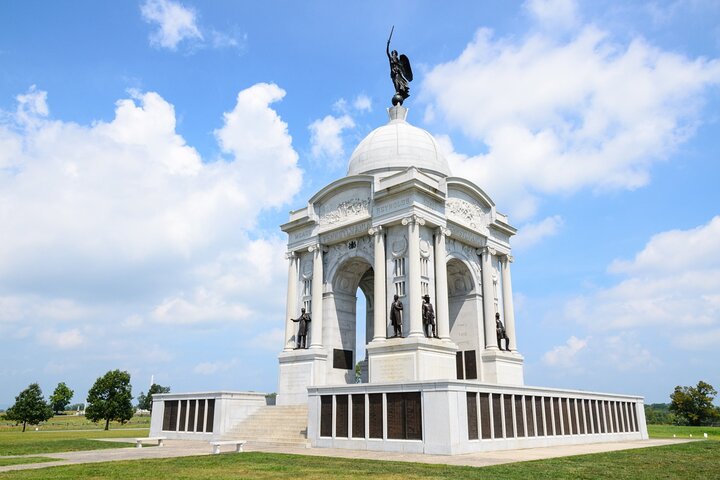Unveiling Civilian Stories: A Walk Through Gettysburg’s Historic Streets
Drawn by the promise of untold stories, I embarked on the Gettysburg Walking Tour to uncover the civilian experiences during the Civil War’s deadliest battle. Join me as I explore the echoes of the past in this historic town.
A Stroll Through Time: The Streets of Gettysburg
As a historian with a penchant for uncovering the stories of the past, I found myself drawn to the Gettysburg Walking Tour of Civil War Civilian Stories. This self-guided tour promised to reveal the tales of ordinary people caught in the extraordinary circumstances of the Civil War’s deadliest battle. With my wife by my side, we embarked on this journey through the heart of Gettysburg, eager to delve into the civilian experiences that shaped this historic town.
Echoes of the Past: The Jennie Wade House and Beyond
Our tour began at the Jennie Wade House, a poignant reminder of the civilian toll during the Battle of Gettysburg. As we stood outside the modest home, I couldn’t help but imagine the fear and uncertainty that Jennie and her family must have felt as Confederate troops advanced. The audio guide painted a vivid picture of their plight, and I was reminded of the countless untold stories of civilians who found themselves in the crossfire of history.
Continuing our walk, we passed by the Gettysburg National Cemetery, where the graves of Union and Confederate soldiers lay side by side. The somber atmosphere was a stark contrast to the bustling town around us, and it served as a powerful reminder of the sacrifices made during those fateful days in 1863. The tour’s narrative brought to life the challenges faced by the townspeople as they navigated the aftermath of the battle, from burying the dead to rebuilding their lives.
Hidden Stories: The Tillie Pierce House Inn and More
One of the highlights of the tour was the Tillie Pierce House Inn, where we learned about the young Tillie Pierce and her harrowing experiences during the battle. Her story of bravery and resilience resonated deeply with me, and I was struck by the parallels between her experiences and those of civilians in war-torn regions throughout history. The tour’s focus on these personal narratives added a rich layer of depth to our understanding of Gettysburg’s history.
As we made our way through the town, we encountered the Gettysburg Heritage Center, which offered a broader perspective on the civilian experience during the Civil War. The exhibits and artifacts provided context for the stories we had heard, and I was reminded of the importance of preserving these narratives for future generations. The tour concluded at the train station, where a fascinating VR presentation transported us back to the days of the battle, offering a unique glimpse into the past.
Reflections on the Journey: A Missed Opportunity
While the tour was an enlightening experience, I couldn’t help but notice a significant omission. The Sweney or Farnsworth House, with its bullet-riddled walls, was not included in the tour. As a historian, I found this to be a missed opportunity to explore another layer of Gettysburg’s rich history. The house stands as a testament to the intensity of the battle and the impact it had on the town’s architecture and residents.
Despite this oversight, the Gettysburg Walking Tour offered a compelling glimpse into the lives of those who lived through one of America’s most pivotal moments. For those with limited time, it provides an accessible and engaging way to connect with the past. As we made our way back through the town, I reflected on the resilience of the people of Gettysburg and the enduring legacy of their stories. This journey through history was a reminder of the power of storytelling and the importance of preserving the voices of the past.












































